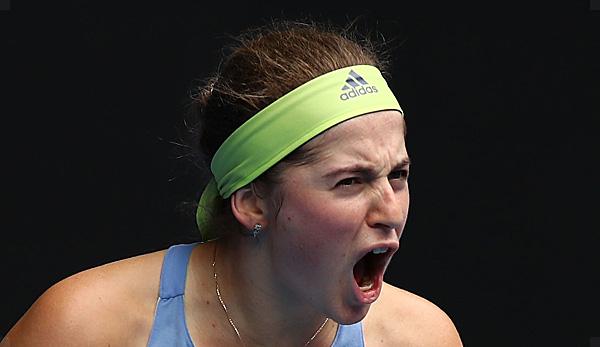Serena Williams is not at the start, some of her fellow favourites have already said goodbye to the Australian Open in round one. That could open the door for the next surprise winner.
What is actually impossible in modern women’s tennis? That was the big question of price last year. For example, when the 20-year-old Latvian Jelena Ostapenko won the French Open out of nowhere and as the first unseeded player. Or when the long-time injured Sloane Stephens won the US Open at home, a good four weeks after she was 957th in the world rankings.
Whoever had expected more reliability from the new season and from the Australian Open, the traditionally first Grand Slam Festival, received an answer on the first day of the competition. Not least in the person of Stephens, the New York tennis queen. Since her big day in Flushing Meadows, she’s been in the midst of the next crisis, not a single match has won, and this black series continued at the National Tennis Center in Melbourne with a bitter 6-2,6-7,2-6 defeat of the Chinese Zhang Shuai. There had been a purely American semi-final in the Big Apple four months ago, apparently also a renaissance of American women’s tennis beyond New-Mama Serena Williams. In Melbourne, however, the roller coaster ride that has left its mark on women’s tennis these days continued.
Up and down, again and again – within the first few hours three of the four proud US Open semi-finalists were eliminated. Stephens first, Coco Vandeweghe last. And right in the middle of it is Venus Williams, last year’s finalist in Melbourne against sister Serena. She lost 3:6 and 5:7 to 20-year-old Belinda Bencic, the new Miss Swiss. Bencic, who dropped out of the top 300 after a wrist injury, could now be the next surprise act in her comeback:”All you know is that you don’t know anything. Then when Serena’s not there,”says ex-star Chris Evert (USA) about the industry,”many can do a lot now.”
Which could be true for a girl like Julia Görges. Melbourne, the Australian Open, is her favourite Grand Slam. She’s entered the last sixteen down under three times, but she’s never made it (just like anywhere else). In the here and now of unpredictable women’s tennis, however, she has risen to a co-favorite, the fabulous final spurt in the last season and the so far perfect entry into the 2018 series have suddenly, after years of frustration and missed opportunities, aroused justified expectations “Görges can create what Kerber succeeded here in 2016,”says Boris Becker, in Melbourne. That would mean a Grand Slam victory.
On Monday, on the long road to this potential dream result, Görges straightforwardly fulfilled her duty, defeating US teenager Sofia Kenin 6:4 and 6:4. Almost habitually, the 29-year-old dominated the game with a first-class serve (14 aces) and aggressive baseline play,”There’s no reason to complain about my form,”she later said,”that was the solid performance needed to start the tournament,” and Görges now meets capricious French Alize Cornet.
Mona Barthel also made good progress: the last year’s last 16-finalist won against Monica Niculescu from Romania 6:4 and 7:5 and is now facing the number 32 seeded Estonian Annett Contacts. Philipp Kohlschreiber, on the other hand, who suffered from a cold, lost the game in a wild start match with 3:6,6:2,0:6,6:1 and 2:6. On Tuesday Angelique Kerber, one of those moody leading figures in women’s tennis, will also take part in the tournament. After a dream season in 2016 and a nightmare year in 2017, she is currently back on top again, has not yet lost a match in the new year and has just won the WTA title in Sydney. Anna-Lena Friedsam, a colleague from the Fed Cup team, is Kerbers first opponent. Where this will all end for Kerber and all the others in women’s tennis, who knows?














You must be logged in to post a comment Login